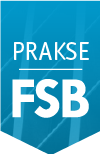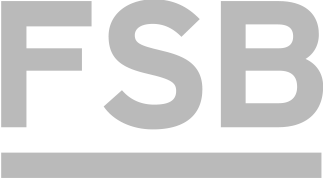International Exchange
Course details
Student Mobility > Programmes and Courses > Courses in English > Course detailsShip Vibration
- Teaching:
- ECTS:
- Level:
- Semester:
- Prerequisites:
- None
- Load:
Lectures Exercises Laboratory exercises Project laboratory Physical education excercises Field exercises Seminar Design exercises Practicum 45 0 30 0 0 0 0 0 - Course objectives:
- Presentation of the basic notions of the vibration theory and ship vibration. Definition of vibration problems and consideration of possibilities for their solutions. Reliable prediction of vibration level in the ship design stage. Review of vibration measurement procedures and vibration remedy.
- Student responsibilities:
- Grading and evaluation of student work over the course of instruction and at a final exam:
- 3 preliminary exam seminar work oral exam
- Methods of monitoring quality that ensure acquisition of exit competences:
- student"s survey
- Upon successful completion of the course, students will be able to (learning outcomes):
- After successfully completed course, the student will be able to: - Integrate advanced mathematics (particularly differential equations), Mechanics I, II, and Strength of materials in the analysis of vibrations of mechanical systems, - Calculate natural frequency of discrete and continuous vibration systems, - Calculate the amplitude of forced vibration of discrete and continuous vibration systems, - Estimate the specific effects of stiffness, inertia and damping - Solve dynamic problems, - Integrate mathematics in the calculations of vibrational behavior of simple models of mechanical systems and comment their vibrational behavior - Calculate the basic geometrical and inertial characteristics required for the calculation of global vibrations of ship hull - to decompose at the basic level the calculation of fatigue strength of ship structures.
- Lectures
- 1. Single degree of freedom system. Excitation by force and support. Principles of vibration measurement instruments.
- 2. Beam flexural vibration. Differential equation. Free and forced vibration. Analytical solutions. Boundary conditions. Natural frequencies and mode shapes. Forced response.
- 3. Beam longitudinal and torsional vibration. Differential equations. Free and forced vibration. Analytical solutions. Boundary conditions. Natural frequencies and mode shapes. Forced response.
- 4. Introduction to ship vibration. Vibration parameters. Engine and propeller excitation. Vibration criteria.
- 5. Ship hull vibration. Coupled horizontal and torsional, and vertical and longitudinal vibration. System of differential equation. Energy formulation of vibrating system.
- 6. Numerical methods for flexural ship hull vibration. Analytical solution. Finite difference method. Minimum energy method. Finite element method.
- 7. Numerical methods for torsional ship hull vibration. Analytical solution. Finite difference method. Minimum energy method. Finite element method.
- 8. Plate and orthotropic panel vibration. Boundary conditions. Free and forced vibration. Analytical solutions.
- 9. Finite element method in ship structure vibration analysis. Matrix differential equation. Free and forced vibration. Superposition method. Superelement technique.
- 10. Illustrative examples of ship structure vibration analysis by FEM and program SESAM.
- 11. Vibration measurements. Analysis of results. Remedy of vibration.
- 12. Introduction to fatigue of ship structures. Mechanics of fatigue phenomena. Causes of fatigue. Critical details. Improving fatigue life.
- 13. Calculation methods of fatigue damage. Long-term distribution of stresses. Endurance of structural details regarding dynamic loads. Fatigue life estimation.
- 14. Procedure for calculation of fatigue life according to rules of ship classification societies.
- 15. Numerical examples of fatigue life calculation of ship structural details.
- Exercises
- 1. Example of forced harmonic vibration of single degree of freedom system.
- 2. Example of forced vibration of single degree of freedom system excited by rotating unbalance. Example of forced vibration of single degree of freedom system excited by harmonic support motion.
- 3. Example of beam flexural vibration analysis by equations based on influence coefficients. Calculation of fundamental frequency by Rayleigh method.
- 4. Example of analytical solution of prismatic beam flexural vibration problem using Krylov"s functions.
- 5. Stiffness and mass parameters necessary for ship hull vibration analysis. Description of parameters and methods for their determination.
- 6. Example of application of the finite difference method for numerical solution of beam flexural vibration problem.
- 7. Example of application of the energy method for numerical solution of beam flexural vibration problem. Example of application of the finite element method for numerical solution of beam flexural vibration problem.
- 8. Examples of the analytical solution of beam torsional and axial vibration problems. Example of application of the energy method for numerical solution of beam torsional and axial vibration problems. Example of application of the finite difference method for numerical solution of beam torsional and axial vibration problems.
- 9. Examples of application of the finite element method for numerical solution of beam torsional and axial vibration problems.
- 10. Example of flexural vibration analysis of homogenous plate by energy method.
- 11. Overview of computer programs for vibration analysis.
- 12. Example of simplified procedure for fatigue life estimation of hull-girder due to vertical wave bending moments.
- 13. Example of calculation of fatigue life of connection of side shell longitudinal and web frame.
- 14. Example of spectral approach for fatigue life calculation of hull-girder due to vertical wave bending moments.
- 15. Overview of computer programs for calculation of fatigue life of ship structural details. Application of hydrodynamic analysis for determination of wave loads. Application of the finite element method for calculation of stress concentration in vicinity of welded joints.
- Compulsory literature:
- I. Senjanović: Vibracije broda, 1., 2., 3.dio, Sveučilište u Zagrebu, Zagreb, 1974/90/81.
Vibration Control in Ships, VERITEC, Oslo, 1985.
Building and Operation in Vibration, BV, Paris, 1987. - Recommended literature:
- guidance notes of classification societies






